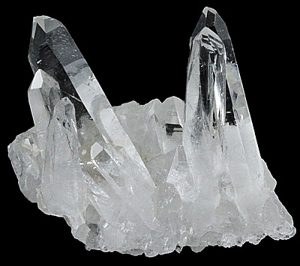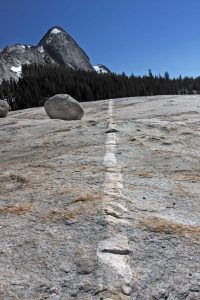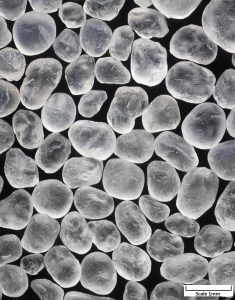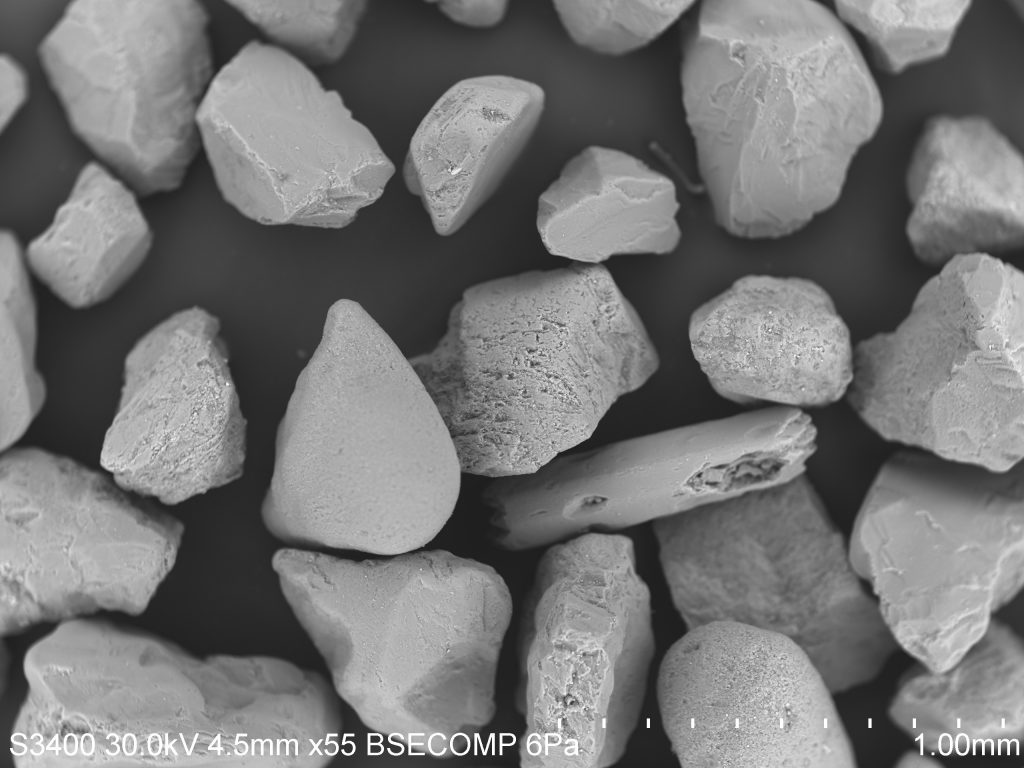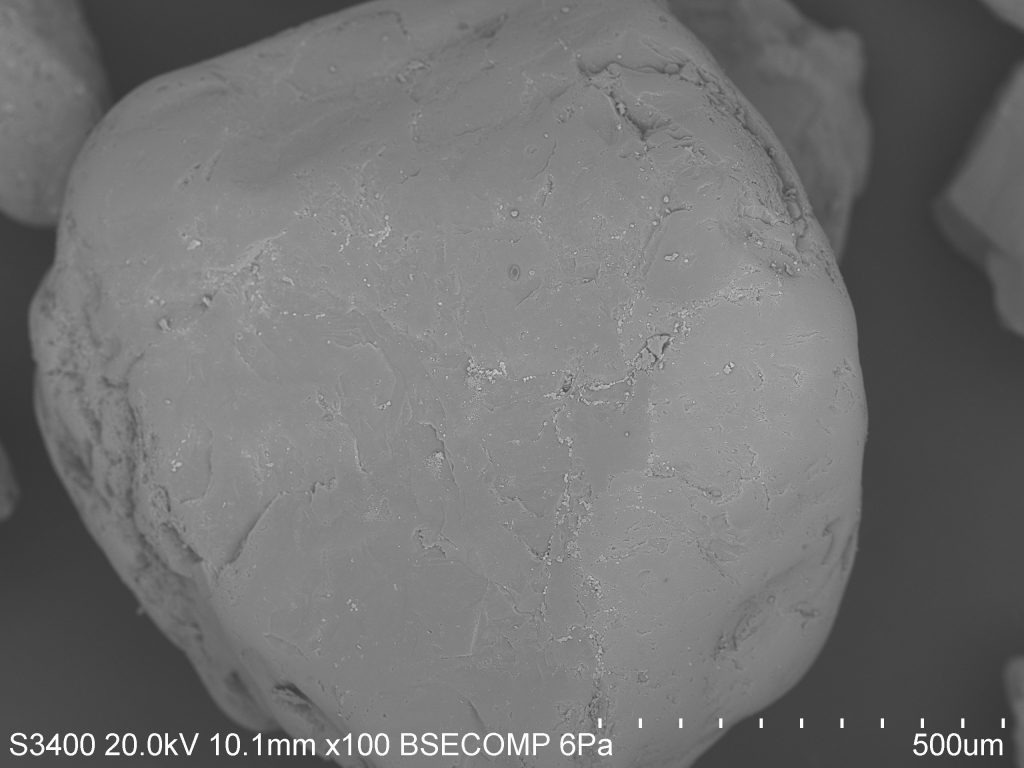Quartz is one of the most common minerals within beach sand, and often serves as an indicator of weathering and erosion depending upon abundance and surface textures. The general public likely associates quartz with large transparent crystals (figure 1, left). Geologists often think of quartz as a common mineral within dikes, or a body of rocks/minerals that form in the pre-existing fractures of rock (figure 1, middle). On the other hand, sedimentologists are prone to thinking of quartz as semi-transparent and weather-resistant grains (figure 1, right).
Figure 1: (Left) Quartz crystals. (Middle) Dike comprised of a quartz vein. (Right) Quartz grains.
Quartz grains within sand must be identified before assessing weathering and erosional parameters. Figure 2 shows an SEM image of a sand sample from Moss Landing Beach at 55x magnification. To the untrained eye, distinguishing a quartz grain from feldspar, mica, magnetite, or other minerals may seem daunting. Many clues used to identify minerals, such as color, luster, streak, and hardness, cannot be employed here. But after a bit of searching, the grain in figure 3 appears promising due to a lack of both cleavage planes and large pits.
Figure 2: SEM image of a sand sample from Moss Landing Beach (magnification: 55x).
Figure 3: SEM image of a quartz grain from a sand sample taken at Moss Landing Beach (magnification: 100x).
Determining the elemental composition may help to confirm that the grain in figure 3 is quartz. Luckily, the SEM has an energy-dispersive x-ray spectrometer (EDX) that characterizes elemental composition. After only a few minutes of calibration and analysis the EDX provides results, suggesting that a point in the middle of the grain is 33.33% silicon and 66.67% oxygen. This supports the hypothesis that it is a quartz grain, given that the composition of quartz is SiO2.


